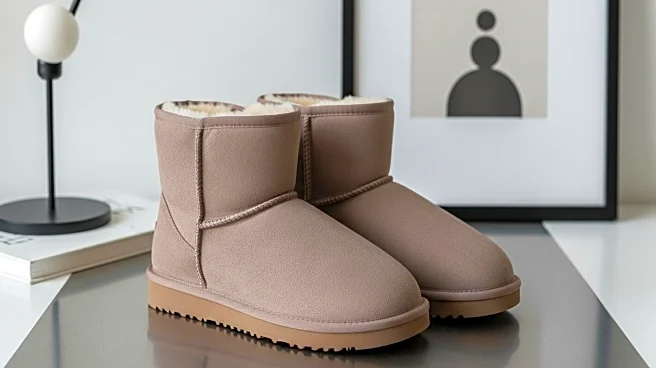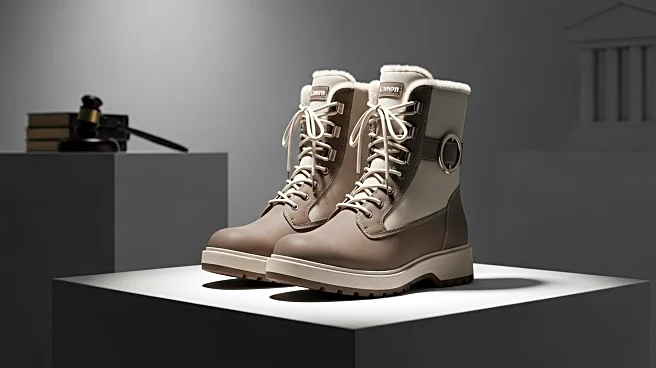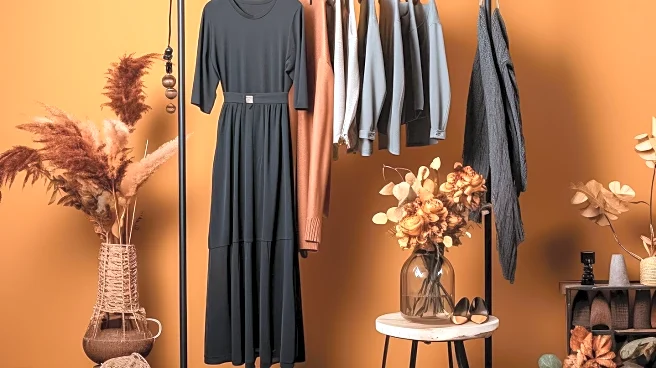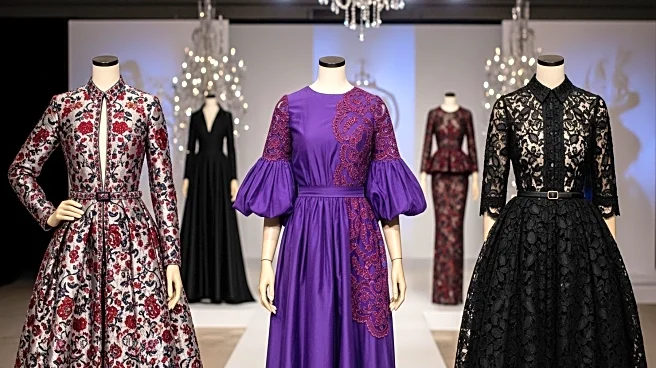What's Happening?
A federal judge in California has ruled that UGG's Classic Ultra Mini boot and Tasman slipper designs are too generic to be protected under trade dress law. This decision comes as part of a legal battle between Deckers Outdoor Corporation, the owner of UGG, and Quince, a direct-to-consumer brand accused of copying UGG's designs. Deckers had filed a lawsuit against Quince in June 2023, claiming that Quince's shearling footwear products infringed on its unregistered trade dress rights and a design patent. Quince countered by arguing that the design elements in question, such as ankle-high suede construction and exposed stitching, are common features in the sheepskin footwear market and cannot be claimed as proprietary by UGG. The court sided with Quince, stating that the design elements are too commonly used to identify a single source, thus granting partial summary judgment in favor of Quince.
Why It's Important?
This ruling highlights the challenges fashion brands face in protecting their designs under trade dress law, especially when those designs are widely used across the industry. The decision limits the scope of what Deckers can claim as exclusive, potentially impacting its ability to protect its brand identity against similar products in the market. For the fashion industry, this case underscores the limitations of trade dress protection and the need for brands to explore other legal avenues, such as design patents or copyrights, to safeguard their designs. The outcome may encourage other brands to challenge similar claims of exclusivity, potentially leading to a more competitive market for fashion products.
What's Next?
The case will continue as the court has not invalidated UGG's design patent and has left intact its trade dress claim related to the Bailey Button boot. Deckers may need to reassess its legal strategy and consider alternative methods to protect its brand. The decision could prompt other companies to reevaluate their own trade dress claims and defenses, potentially leading to more litigation in the fashion industry. Additionally, the ruling may influence how brands approach the design and marketing of their products, knowing that widely used features may not be protectable under trade dress law.
Beyond the Headlines
This case illustrates the broader legal landscape for fashion brands, where the balance between protecting design innovation and allowing market competition is continually tested. The ruling may lead to a shift in how brands invest in and protect their design elements, possibly encouraging more innovation and differentiation in product offerings. It also raises questions about the role of trade dress in an industry where trends and styles are often shared and adapted across brands.












